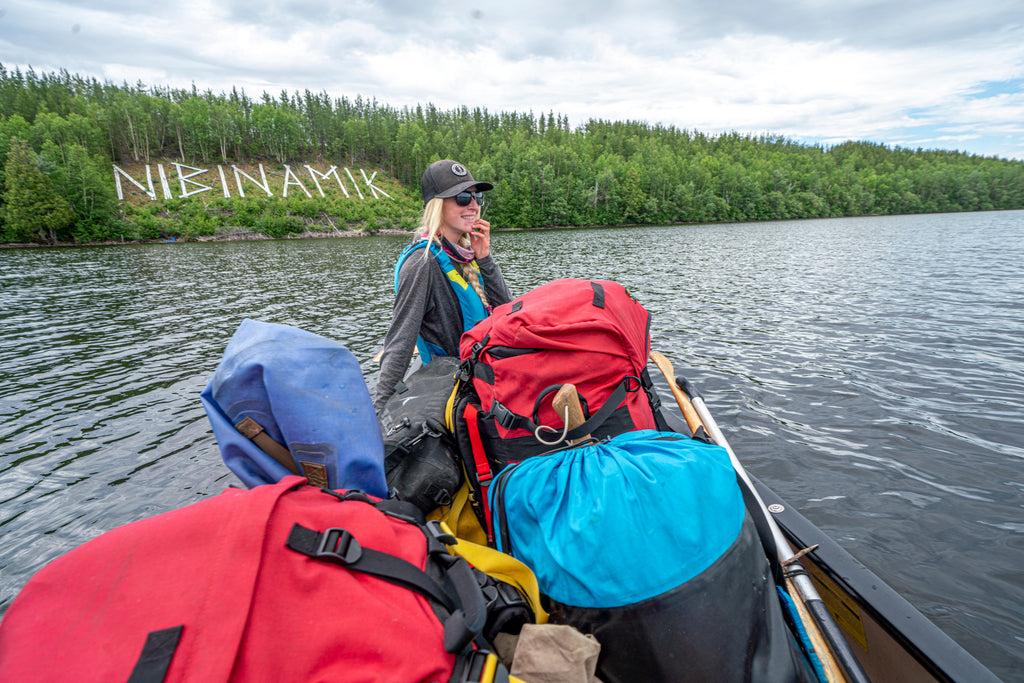Loaded up with 60 days of food, camping gear, and maps spanning 1300km, David Jackson and his partner Leah began their paddle and portage trip in Ontario’s most northern community of Fort Severn last summer. Follow their incredible journey and encounters with wildfires, dry creeks, flooded rivers, overgrown trails, and the constant torment of bugs along the traditional routes of the Nishnawbe people.
---
When we talk about old trails, we are talking about thin lines that read like heartbeats through a maze of water. Some trails bypass rapids, others connect waterways that flow to different oceans, but they are all the link that makes northern lands and creates a canvas for the canoe to draw upon for time immemorial. Our route followed old trails that were once highways between important places for nomadic Indigenous people; grounds where hunting was good, waters where fish were plentiful, and places where people met to trade. If now we find recreation, these were once lifelines.

Drawing a line on a map, or better yet, throwing a dart at northern Ontario and proclaiming one's intentions to travel is much easier said than done. The route was a dream for my photography. Over the years, I have visited different fly-in Oji-Cree communities on assignments and always left telling new and old friends that one day I would paddle through and say hi. When we drew our line on the map, we first connected the communities and then figured out how people traditionally travelled between them. This concept would take us to the Hudson Bay coast, somehow through Eabametoong, Neskantaga, Nibinamik, Wunninmun Lake, Kingfisher Lake, Kitchenuhmaykoosib Inninwug, Wapekeka, and finally Fort Severn, or Wasaho Cree Nation. Dreaming is simple, but the places in between these distant communities would comprise our summer, months of toil on the old trail. We found cut marks on trees, blazes, long since grown deep into the bark. We saw fire rings filled with moss that had grown for hundreds of years. Every time, we stopped to talk about who had left these stories etched in the landscape, marvelling at what time has hidden.

Four weeks into our trip, we found ourselves on Kingfisher Lake, where we met Kevin Winter. He motored up to us as we made dinner on a rocky outcrop of an island; he was one of two people we would interact with on the trip. We started talking about our journey, and his canoe travels in the area, him alluding to his knowledge of a river we were about to go down. When he returned just before sunset, his tin boat was full of food, and he insisted we fill our packs. After 30 days, Leah nor I could decide what tasted better, a banana or a bag of chips. Kevin sat there smiling in his boat, and for hours we shared stories, mostly we listened to his. When he asked to see our maps of the river ahead, The Ashweig, he reminded us quickly how this was no wilderness waterway.

Instead, he showed us all his family's use. Pointing with his finger, he showed us bad rapids and where a small cabin was tucked into the spruce, urging us to use it if we needed safety. Our skin covered in goosebumps when he showed us the island where his father was born, his grandmother having to give birth on a hunting trip when it was time, or when he pointed to a spot and told us there were old graves here and to "watch for the cross." We couldn’t stop and visit people as I had hoped, as, with the rest of the world, the pandemic had isolated communities on lockdown protocols, but meeting Kevin was all we had dreamed the trip to be. We had set off to learn about the traditional trails, to demystify a place we so often hold as wild, yet the north is alive in story and spirit, woven with history. In an evening, one where we were bug-bitten, becoming skinny, and halfway on our long journey, Kevin offered us a lesson we can never forget, something that remains with us long after the trail.

If you travel in the north, you're always being watched, and how you carry yourself in the places between is what the old trails teach us about life. The next thirty days would be the most memorable of our lives, a time of struggle, hunger, and love at first falls.




